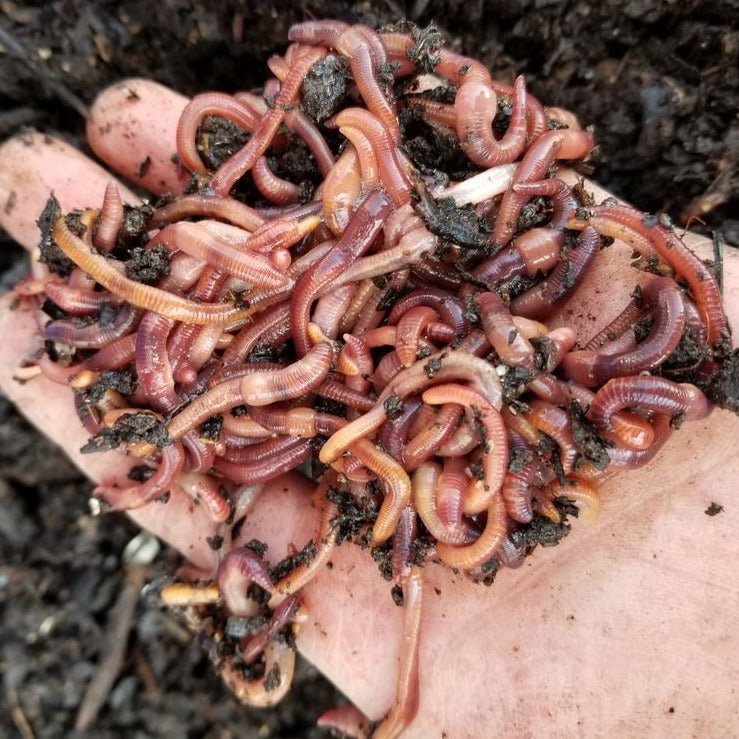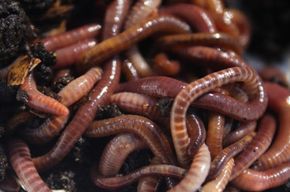Understanding Red Wiggler Composting: Essential Practices for Healthy And Balanced Composting
Understanding Red Wiggler Composting: Essential Practices for Healthy And Balanced Composting
Blog Article
Checking Out the Devices of Red Wiggler Composting: A Comprehensive Overview to the Process and Its Positive Effect On Sustainable Gardening Practices
The complex systems of red wiggler composting, utilizing the unique physiology of Eisenia fetida, offer an engaging avenue for boosting lasting gardening practices. As urban gardening gains grip, understanding the nuances of this composting approach ends up being significantly pertinent.
Understanding Red Wigglers
Red wigglers, clinically called Eisenia fetida, are a types of earthworm highly regarded for their performance in composting natural waste. These worms flourish in nutrient-rich atmospheres, particularly in rotting organic issue, making them perfect for vermicomposting systems - Red Wiggler Composting. Identified by their reddish-brown coloration and segmented bodies, red wigglers are smaller than typical earthworms, typically measuring between three to 4 inches in size
Their special physiological characteristics improve their composting capacities; for circumstances, they have a high reproductive rate, allowing populations to multiply quickly under ideal problems. Red wigglers eat natural material, damaging it down via their gastrointestinal systems, which leads to nutrient-rich spreadings that work as an exceptional natural fertilizer. Their starved cravings allows them to refine big quantities of food waste effectively, considerably lowering garbage dump payments.
Along with their composting expertise, red wigglers play a vital duty in soil health. Red Wiggler Composting. They aerate the soil and help with the decomposition of organic matter, additional enhancing the dirt community. Recognizing the attributes and ecological advantages of red wigglers is essential for anybody seeking to apply lasting gardening methods via efficient composting methods
The Composting Process
The composting procedure entails breaking down natural materials right into nutrient-rich compost, a job that red wigglers excel at as a result of their specialized gastrointestinal systems. These worms eat food scraps, backyard waste, and various other raw material, transforming them into beneficial garden compost via a series of chemical and organic procedures.
Originally, the raw material is combined with bed linen materials such as shredded paper or dried out leaves, creating an optimum atmosphere for the worms. As the red wigglers ingest this combination, they damage it down via their gut, where bacteria better break down the product. This process produces warmth, promoting microbial task, which increases disintegration.

Benefits of Red Wiggler Composting
Several gardeners and eco-conscious people acknowledge the numerous benefits of red wiggler composting, making it a popular selection for reliable waste administration. Among the primary benefits is its ability to significantly lower natural waste in landfills - Red Wiggler Composting. Red wigglers effectively break down cooking area scraps and various other naturally degradable products, changing them into nutrient-rich vermicompost that enhances soil wellness
Furthermore, red wiggler composting improves soil structure and fertility. The resulting vermicompost is brimming with useful microorganisms, which promote plant development and enhance nutrient retention. This all-natural plant food not just sustains sustainable horticulture methods but also reduces dependence on chemical plant foods, promoting a much healthier ecosystem.
Furthermore, red wiggler composting is a space-efficient technique, making it ideal for city gardeners with limited area. The process can be conducted inside your home or outdoors, permitting for year-round composting regardless of environment conditions. Furthermore, red wigglers are low-maintenance microorganisms that need marginal treatment, making them available for newbie gardeners.
Essentially, the advantages of red wiggler composting extend beyond waste reduction; they contribute to healthier dirts, lasting horticulture techniques, and ecological stewardship, placing it as a valuable method in contemporary cultivation.
Finest Practices for Composting
For successful red wiggler composting, sticking to ideal techniques is crucial to make best use of performance and make sure a productive atmosphere for these worms. This equilibrium advertises ideal decay and enhances the worms' health.
Next, screen wetness levels, aiming for a wet, sponge-like uniformity. Overly wet problems can bring about anaerobic disintegration, while excessive dry skin may impede worm activity. Additionally, guarantee correct oygenation by turning the garden compost on a regular basis, which helps protect against compaction and permits for adequate oxygen circulation.
Temperature level is one more important variable. Keep a series of 55 ° F to 77 ° F(13 ° C to 25 ° see this page C) to advertise worm task and microbial development. Prevent introducing meat, milk, and oily foods, as these can draw in bugs and produce smells.
Enhancing Lasting Gardening
Sustainable gardening symbolizes an alternative method that balances ecological principles with practical horticulture methods. By integrating approaches such as red wiggler composting, garden enthusiasts can considerably boost their methods, cultivating an extra resilient community. Red wigglers, renowned for their efficient disintegration capacities, convert natural waste into nutrient-rich garden compost, therefore improving the dirt without depending on chemical fertilizers.
Applying lasting gardening strategies, such as crop rotation, friend growing, and mulching, further complements the advantages of composting. These methods not only enhance soil structure and fertility however also promote biodiversity, drawing in helpful pests and organisms that add to grow health and wellness. Making use of native plants can lower water intake Read Full Article and lessen maintenance, lining up with water conservation efforts.

Final Thought
In conclusion, red wiggler composting stands for a vital technique for boosting lasting gardening practices. Inevitably, the fostering of red wiggler composting can significantly add to green horticulture, benefitting both urban and newbie gardeners in their cultivation initiatives.
The detailed systems of red wiggler composting, using the special physiology of Eisenia fetida, present an engaging method for enhancing lasting gardening methods. Comprehending the characteristics and eco-friendly advantages of red wigglers is vital for any individual looking to execute sustainable horticulture methods with reliable composting approaches.

In conclusion, red wiggler composting represents an important approach for improving sustainable horticulture practices. Inevitably, the fostering of red wiggler composting can substantially add to environmentally friendly gardening, profiting both metropolitan and novice garden enthusiasts in their cultivation initiatives.
Report this page